|
Co-sponsors of the 2023 Winning Out
Certificates


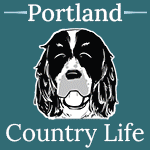
| |
Or what can be achieved if you
really really want...
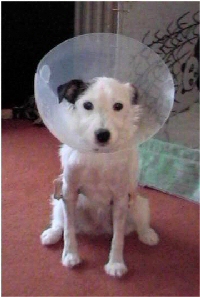 You've
read about Peter van Dongen's little JRT X Sky on Agilitynet before in
Peter's Pup
and Sky's First
Show. What more
could a puppy want than to belong to a vet? This is a story
about her fight to overcome a seriously debilitating developmental joint problem in her early
life and a spinal problem later on to become a successful agility dog. You've
read about Peter van Dongen's little JRT X Sky on Agilitynet before in
Peter's Pup
and Sky's First
Show. What more
could a puppy want than to belong to a vet? This is a story
about her fight to overcome a seriously debilitating developmental joint problem in her early
life and a spinal problem later on to become a successful agility dog.
Sky was born on 7 March 2002. It was
the first day of Crufts that year and I took it to be an omen. After all, this little dog was
to be my next agility dog, after having had a very successful agility dog Basil before. Sky is
a small nearly completely white terrier, from a Parson-type Jack as a father and a ¾ Jack
mother, with ¼ Yorkie in her. So Sky's 1/8th Yorkie and 7/8th Jack. She
was the only long legged puppy in the litter which is why I chose her. However, this might have
been the reason for her problems later on.
I did all the right things with Sky
from a very young age, such as puppy parties, basic obedience classes and then more advanced
obedience classes to make sure she was a well adapted, well behaved, well trained little dog.
Obviously I had agility in mind all the time, and I adapted the training to this purpose.
But when Sky was about eight months
old, I noticed that she was very slightly stiff on both of her front legs, but more so on the
left than on the right, especially when trotting.
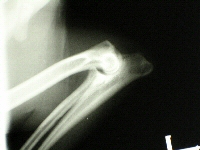 Treatment Treatment
Being a vet myself, I decided to examine her properly and take radiographs (x-rays) of her
front leg joints. These showed that there was indeed a problem. The joint space between her
humerus (upper arm bone) and radius (one of the lower leg bones) was bigger than normal. The
same changes were visible in both fore legs. This indicates short radius syndrome, one of the
many different forms of Elbow Dysplasia, and
is caused by an uneven growth in length between radius and ulna, most likely due to premature
closure of the proximal radius growth plate, the cartilage area from where the bone growths in
length. It normally leads to elbow incongruency (mal-fitting) and subsequent osteo-arthritis. I
was shattered, as this meant she would nearly certainly never become my next agility dog at
all.
Sky was operated on very shortly after
diagnosis by Noel Fitzpatrick, an orthopaedic specialist and a personal friend of mine, to try
and reduce the joint incongruency as quickly as possible. This was done by placing a
trans-articular external fixator (pins, placed from the outside into the bone, then connected,
crossing the joint) on both fore legs, whilst placing a compressive force across the proximal
and distal pins before connecting them externally, to establish a spring-like compression. This
would lead to compression between radius and humerus, establishing a correct surface
re-modelling of the proximal radial head.
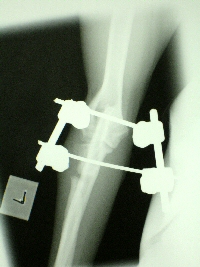 Sky
was forced to have cage rest for several weeks, which was not easy with a young and bouncy
puppy, unable to use her front legs properly! She was also on daily pain killer injections and
antibiotic tablets. Follow-up radiographs showed good realignment of the bones after only about
4 weeks time. The external fixator was removed at this stage. Sky
was forced to have cage rest for several weeks, which was not easy with a young and bouncy
puppy, unable to use her front legs properly! She was also on daily pain killer injections and
antibiotic tablets. Follow-up radiographs showed good realignment of the bones after only about
4 weeks time. The external fixator was removed at this stage.
Rehab and
maintenance
This is when we began our rehabilitation program. Sky started to swim regularly in a heated
canine swimming pool, initially freely and then against jets after she became stronger and
accustomed to the swimming itself. She didn't really enjoy the swimming but got used to it in
the end. We also performed magnetic field therapy at home for several weeks to reduce pain and
inflammation, as well as manual therapy such as daily massage and range-of-motion exercises.
Slowly but surely, Sky started to make
a full recovery and I began to think that perhaps she would be able to do something like
obedience or heelwork to music. I still thought that it would prove impossible to do agility
with her.
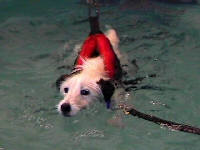 However,
due to all the hard work we put in, and with lots of help from Mother Nature, Sky made such a
super fast and complete recovery that, when she was two years old, I began to slowly train her
for agility. She never looked back, was never lame after exercise or training and started her
career in the competitive world of agility when she was already three years old. However,
due to all the hard work we put in, and with lots of help from Mother Nature, Sky made such a
super fast and complete recovery that, when she was two years old, I began to slowly train her
for agility. She never looked back, was never lame after exercise or training and started her
career in the competitive world of agility when she was already three years old.
At the moment, at six years old, she is
an active and relatively successful agility dog, competing at Grade 6 and regularly bringing
home some rosettes and even trophies. I look at her all the time, especially whilst doing
agility, wondering whether she will start to show symptoms of wear and tear in her joints, an
uneven gait, any lameness or stiffness or other problems. But, so far so good.
The only treatment I have her on is a
chondro-protective (cartilage sparing) supplement, called Seraquin which contains glucosamine
and Chondroitin sulphate, substances which help the cartilage in her joints to stay as healthy
as possible. She is not on any anti-inflammatory drugs or pain killers at any time, as I
strongly believe that dogs shouldn't compete whilst on these drugs. The only other preventative
care I give Sky is regular pre- and post exercise massage, to help prevent injury.
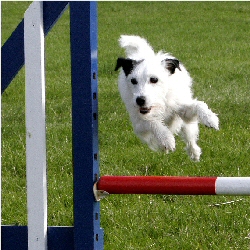 Last
year Sky was starting to slow down a bit when doing agility and I had the feeling something was
not quite right. I took her to see Jackie Grant, an ACPAT Cat A Veterinary Physiotherapist, who
I now work with at my Veterinary Practice. She found mild spinal pain, with the presence of
various trigger points in the back musculature. These are very painful areas of tight muscles.
We immediately started a proper physiotherapy program, including laser therapy, daily massage,
exercises and hydrotherapy. Within a few weeks of starting her intensive treatment, she was
back on top. Last
year Sky was starting to slow down a bit when doing agility and I had the feeling something was
not quite right. I took her to see Jackie Grant, an ACPAT Cat A Veterinary Physiotherapist, who
I now work with at my Veterinary Practice. She found mild spinal pain, with the presence of
various trigger points in the back musculature. These are very painful areas of tight muscles.
We immediately started a proper physiotherapy program, including laser therapy, daily massage,
exercises and hydrotherapy. Within a few weeks of starting her intensive treatment, she was
back on top.
This year, Sky and I qualified for the
European Open Agility Championships 2008, in Germany, which was a great achievement especially
taking into consideration the problems Sky's had in the past. I was so proud to see my little
dog run amongst the best in Europe. It will probably be the highest we can possibly achieve.
We are now taking a little step back
from the world of agility, for various reasons, not in the least because I would certainly
never like to think that excessive exercise would cause possible further damage to her joints.
However, I actually think that agility has helped her to stay a fit and healthy dog over the
last few years, without any deterioration to her health status
The importance
of early intervention
In my opinion, early rehabilitation after surgery and injury, using the various
modalities available within veterinary science and physiotherapy, has made a huge difference to
the health and well-being of my little dog Sky!
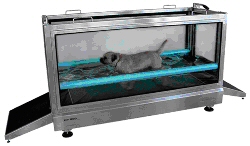 At
our practice, Pennard Veterinary Group, in Sevenoaks, Kent, we strongly believe that certain
kinds of complementary therapy can help, in a major way, in the recovery from injury, as well
as in keeping dogs fit and healthy throughout their life. We already work with a veterinary
physiotherapist (ACPAT, Cat.A) on a regular basis, to help treat mainly orthopaedic and
neurological cases. We also offer acupuncture at our practice, performed by one of my
colleagues. At
our practice, Pennard Veterinary Group, in Sevenoaks, Kent, we strongly believe that certain
kinds of complementary therapy can help, in a major way, in the recovery from injury, as well
as in keeping dogs fit and healthy throughout their life. We already work with a veterinary
physiotherapist (ACPAT, Cat.A) on a regular basis, to help treat mainly orthopaedic and
neurological cases. We also offer acupuncture at our practice, performed by one of my
colleagues.
Recently we have built a brand new
hydrotherapy suite, to accommodate an underwater treadmill. A hydrotherapist will work with me
and the physiotherapist, to help treat dogs needing rehabilitation after injury or surgery, as
well as those dogs with arthritis or soft tissue injuries. Hydrotherapy can also help obese
dogs to lose weight and is used for sporting dogs needing fitness conditioning.
If you like to receive any information
about the Pennard Veterinary Group practice, or about the hydrotherapy
service in particular, call on tel. 01732 452344?
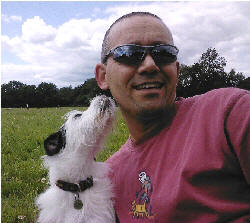 About
the author... About
the author...
Pete van Dongen, Drs. (Utrecht), Cert.V.R., M.R.C.V.S.
qualified as a vet at the Utrecht Veterinary school,
The Netherlands, in March 1990. He worked in a mixed practice in Louth, Lincolnshire, UK, for 3
years, before deciding to limit himself to small animals only. In 1993 he joined Pennard
Veterinary Group, in Sevenoaks, Kent. From December 1996 till January 2005 he ran his own
branch practice in Allington, Maidstone. Currently he is a Director at Pennard Veterinary
Group, now a 13 vet, four branch, small animal veterinary practice. His special interests are
surgery, orthopaedics, radiology and, more recently, Canine Sports Medicine. He has just set up
a hydrotherapy service at his practice.
In May 1995 Peter started agility
(after years of just thinking about it!) with his Jack Russell Cross Basil (a bitch!), then
five years old. Since then they qualified for many finals, including Crufts and Olympia. Basil
won the coveted Crufts 2001 title in the Individual Mini Agility. Peter’s little Jack Russell X
Sky, is now at Grade 6 and has recently taken part in the European Open Agility Championships.
Peter passed the British Agility Club
Instructors' exam in October 1999 (first class) and then did the British Agility Club Judging
Workshop. He regularly writes for various agility magazines and web sites and has been the
official British Team Vet for the Agility World Championships for the last seven years.
Since last year Peter has started to do
yearly charity treks, first to the Norwegian Arctic, then to the Namibian Desert and this year
to Machu Picchu in Peru. You can read his adventures on Agilitynet.
| |
|